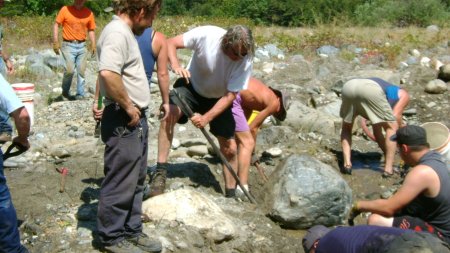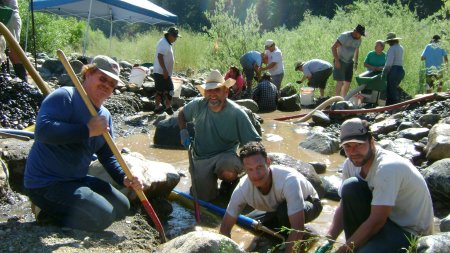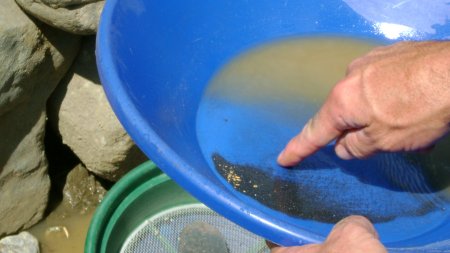BY STEVE HICKS

Placer mining is relatively simple as long as you don’t expect to make a profit; but it becomes much more difficult if your intention is to make some money. If you want to make some money, it’s a lot easier and cheaper to learn from other people’s mistakes, than to put yourself through the school of hard knocks. By far, the most common mistake I see is inadequate or improper sampling, which is often due to gold fever. Other mistakes are: not properly cleaning up bedrock, not researching the past mining history of your area, and starting a mining venture under-funded.
 First, we will cover sampling. A common remark I hear is why put the time, effort, money, etc. into sampling when it can be better-spent on actual mining and making some money? All too often, individuals lose thousands of dollars on their mining ventures; but had they done some sampling and found out that the ground was too low-grade to mine profitably, they would have only spent hundreds of dollars. I have seen an individual go broke trying to mine ground containing less than $2 of gold per yard when there was un-mined ground about 300 yards away running slightly over $100 per yard. That is not a typographical error; it is one hundred dollars. This is, of course, an extreme example; but all too often rich ground is missed. Even before sampling, a literature-search is in order to get an idea of the ground’s value.
First, we will cover sampling. A common remark I hear is why put the time, effort, money, etc. into sampling when it can be better-spent on actual mining and making some money? All too often, individuals lose thousands of dollars on their mining ventures; but had they done some sampling and found out that the ground was too low-grade to mine profitably, they would have only spent hundreds of dollars. I have seen an individual go broke trying to mine ground containing less than $2 of gold per yard when there was un-mined ground about 300 yards away running slightly over $100 per yard. That is not a typographical error; it is one hundred dollars. This is, of course, an extreme example; but all too often rich ground is missed. Even before sampling, a literature-search is in order to get an idea of the ground’s value.
Another common mistake is not separating overburden from pay gravels. Novice miners frequently like to run low-grade overburden. This is because the more gravel they mine, the more gold they recover. While mining everything on a property will maximize the amount of recovered gold, it could bankrupt a person at the same time. If the overburden only contains $2 of gold per yard, and your mining cost is $5 per yard, then you are losing $3 for every yard put through the wash plant.
On the other hand, if you can strip low-grade overburden for $1 per yard, then you have saved $2 per yard which can be directed toward mining the pay gravels.
 Often, new miners leave a lot of gold values in the bedrock. Some highly-fractured bedrock may have values several feet below the surface. The deepest I have ever read about was a Canadian mine going down nine feet into bedrock to get all of the values.
Often, new miners leave a lot of gold values in the bedrock. Some highly-fractured bedrock may have values several feet below the surface. The deepest I have ever read about was a Canadian mine going down nine feet into bedrock to get all of the values.
Most often, the bedrock values will be in the top two feet of bedrock. Once you mine the top six inches, check the next six inches to see if there are still enough values to make it pay. Once again, you must evaluate your mining costs for ripping up bedrock to determine if the effort will pay adequate dividends.
Starting a placer operation under-funded is another common mistake of novice miners. It is a mistake to count on finding some profitable ground to pay off debts right away and carry you through the rest of the season. Unforeseen problems have a way of cropping up, such as equipment breakdowns or a severe water shortage later in the season.
Even though most individuals reading this article won’t be running a large-scale mining operation, these tips should help you toward a more profitable operation even on a smaller-scale. Maybe, with some increased sampling or more efficient mining, you just may find that big nugget this season!
About the Author: Steve Hicks is a geologist specializing in sampling gold placers. He has previously worked a number of years as a mineral examiner for the BLM in Alaska and Montana. Presently he is doing placer consulting work and residing in Livingston, Montana.
- Here is where you can buy a sample of natural gold.
- Here is where you can buy Gold Prospecting Equipment & Supplies.
- More About Gold Prospecting
- More Gold Mining Adventures
- Schedule of Events
- Best-selling Books & DVD’s on this Subject





